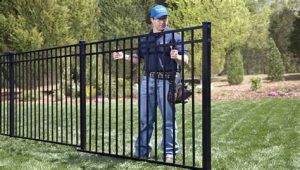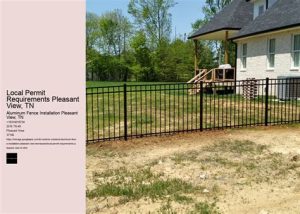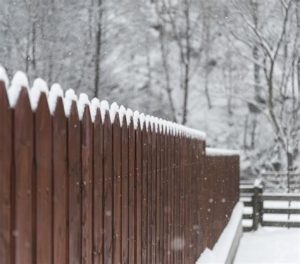Explore how to choose the perfect color palette for your home while considering landscape, exterior design, light effects, and color maintenance for lasting beauty.Installing a fence is an exciting home improvement project that can enhance both your outdoor space and your home’s curb appeal. However, while selecting a fence, color is a crucial aspect that often gets overlooked. The right color palette not only complements your landscape but also harmonizes with the exterior of your home. Additionally, factors like light, shadow, and maintenance can significantly affect how your chosen color appears over time. In this blog post, we’ll explore essential color considerations to keep in mind as you embark on your DIY fencing journey. From understanding the impact of your surrounding landscape to ensuring lasting vibrancy, we’ll guide you through each step to help you make informed decisions and create a beautiful, cohesive outdoor aesthetic.
Choosing the Right Color Palette
When it comes to installing a fence, the color palette you choose plays a significant role in enhancing the overall appeal of your property. A well-selected color not only increases the aesthetic value of your outdoor space but also complements the architectural style of your home.
- Neighborhood Aesthetics: Observe the colors of neighboring fences and homes. This will help you choose a color that blends in well with your surroundings.
- Personal Preference: Ultimately, you should select a color that resonates with your personal taste and complements your lifestyle.
- Material Compatibility: Different fencing materials like wood, vinyl, or metal may have inherent color options that could influence your final choice.
Additionally, consider the function of the fence. If you desire a fence for privacy, darker colors might provide a sense of enclosure whereas lighter colors can help maintain an open feel. Furthermore, the choice of color should also take into account maintenance. Darker shades may show dirt more easily, while lighter colors may require more frequent painting or staining.
The color of a fence can dramatically affect the overall appearance of your yard. Choose wisely!
By carefully considering these aspects, you can create a harmonious and visually appealing environment around your home.
Impact of Surrounding Landscape on Color
When selecting a color for your new fence, it’s crucial to consider the surrounding landscape. The colors and textures of nearby plants, trees, and homes can significantly influence the aesthetics of your choice, either enhancing or clashing with your environment.
The landscape’s natural palette often dictates the most harmonious options. For instance, if your yard boasts vibrant greens and earth tones, a neutral color like beige or soft gray can complement these hues beautifully. Conversely, if your garden features bright flowers, a fence in a bold color like navy or dark green can enhance the visual appeal without overwhelming the space.
As you contemplate different shades, keep in mind the plant life surrounding your fence. A seasonal change can impact how the color perceivably contrasts or merges with the environment.
Considering the Exterior of Your Home
When it comes to installing a fence, one of the most critical factors to consider is the exterior of your home. The color, style, and material of your fence can significantly enhance or diminish the overall appearance of your property. Therefore, it’s essential to take a few moments to assess your home’s existing palette and structural elements.
Begin by evaluating the colors and materials used in your home’s exterior. For instance, if your house boasts a neutral color palette, choosing a bold fence color can create an appealing contrast. On the other hand, a fence that closely matches your home can provide a cohesive look, making your property feel more integrated and cohesive.
Additionally, consider architectural features such as windows, doors, and roof styles when selecting your fence. A classic Victorian home might look fantastic with a white picket fence, while a modern home could benefit from sleek, minimalistic materials in darker shades. Ultimately, aligning your fence with your home’s character can not only enhance curb appeal but also increase the value of your property.
How Light and Shadow Affect Color Perception
When considering color for any project, especially in the context of fence installation, it’s essential to recognize how light and shadow can significantly influence the perception of color. The way natural light interacts with the materials of your fence can lead to dramatic differences in color appearance. As the sun moves throughout the day, it casts varying shadows and highlights, which can alter how we see these colors.
For instance, a light-colored fence may appear more vibrant in direct sunlight, while the same fence can take on a muted or washed-out look when it is in shadow. This variability is crucial for homeowners to consider when choosing a color for their fence, as it can change the overall aesthetic of your property. Many experts recommend observing your selected color at different times of the day to understand its true appearance.
Additionally, the materials used in a fence can absorb or reflect light differently. For example, wooden fences may take on richer hues when wet and appear darker in shade, whereas vinyl fences might retain a consistent color but may not show any depth in shadow. Therefore, it’s important to test samples in a similar environment to your installation site, seeing how they respond to both direct sunlight and reflected light from surrounding structures.
Color Maintenance and Longevity
When it comes to fencing, maintaining the color and ensuring its longevity can be crucial for both aesthetics and functionality. A well-maintained fence not only enhances the appearance of your property but also protects it from the elements.
- Regular Cleaning: Dirt, grime, and mildew can dull the color of your fence. Regularly clean it with a mild detergent and a soft brush to keep it looking vibrant.
- Sealants and Stains: Applying a good quality sealant or stain can help protect the wood from moisture and UV rays, which can fade the color over time.
- Repair and Repaint: Check for any damage regularly. Promptly repairing or repainting any worn areas can significantly extend the life of the color on your fence.
Different materials may require varied maintenance approaches. For instance, vinyl fences typically require less upkeep compared to wooden fences, which may need to be treated every couple of years. Understanding the material of your fence will help you adapt your color maintenance routine accordingly.
Frequently Asked Questions
What are the key factors to consider when choosing a color for a fence?
Key factors include the color of your home, your neighborhood’s aesthetic, how visible you want the fence to be, and whether you prefer a more traditional look or something more modern.
How does the color of a fence affect its maintenance needs?
Darker colors tend to show dirt and dust more readily and may require more frequent cleaning, while lighter colors might fade over time and require regular repainting or staining to maintain their appearance.
Are there colors that can help a fence blend in with the natural environment?
Yes, earthy tones like browns, greens, and grays can help a fence blend seamlessly with surrounding landscapes and vegetation.
What are the psychological effects of different fence colors?
Colors can evoke different feelings; for instance, a bright color can create a playful atmosphere, while blues and greens may promote calmness, and neutral colors like white or beige can suggest elegance.
How can I choose a fence color that complements my landscaping?
Consider selecting a color that mirrors or contrasts the predominant colors in your landscape, such as the hues of your plants, flowers, and existing structures.
What should I know about local regulations regarding fence colors?
Before finalizing your color choice, check with local zoning laws or homeowners’ associations, as there may be restrictions or guidelines on the colors you can use.
How do different colors of fencing materials impact their heat absorption?
Darker colors absorb more heat, which can cause the material to expand and contract and potentially warp over time, while lighter colors reflect heat, leading to less temperature fluctuation.





